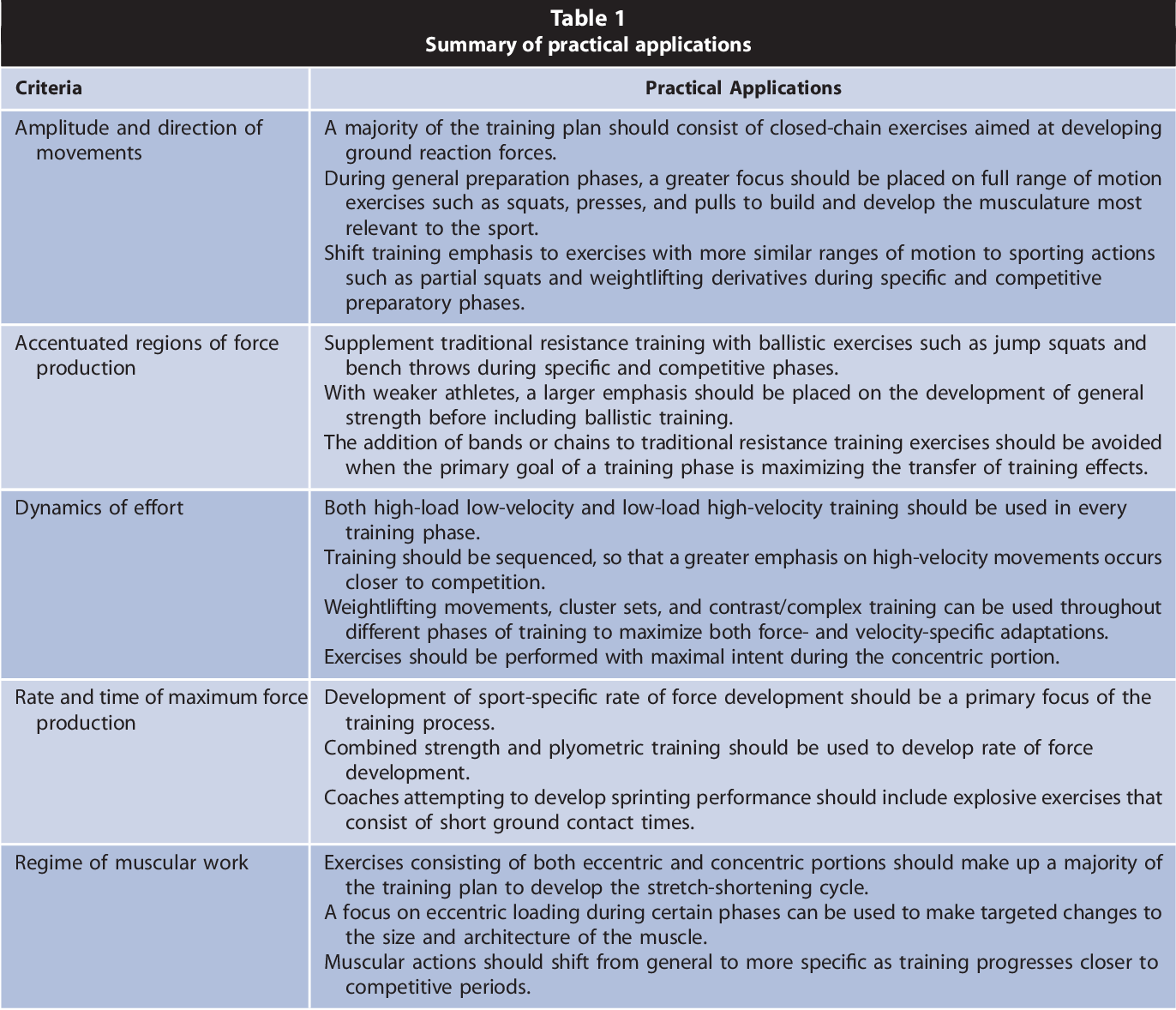A general strength training programme include multi-joint exercises and structured rest periods. It focuses on progressively overloading muscles to improve overall strength.
Embracing the art and science of muscle building, a well-crafted strength training program is the cornerstone for athletes and fitness enthusiasts alike. Such a routine is carefully designed to challenge various muscle groups, enhancing not only muscular strength but also endurance and power.
At its core, the program combines compound movements like squats, deadlifts, and presses, with isolation exercises aimed at targeting specific muscles. It balances workout intensity and frequency to optimize gains while allowing adequate recovery. Tailored to individual goals and fitness levels, these programs promote healthy muscle adaptation and growth. By including consistent progress monitoring and adjusting workload over time, individuals can witness tangible improvements in their physical well-being and performance.
Empowering Bodies And Minds
‘Empowering Bodies and Minds’ is at the core of a general strength training program. It goes beyond lifting weights and extends to boosting confidence, enhancing mental well-being, and forging resilience. This all-encompassing approach creates a synergy between the muscles and the mind, enabling individuals to flourish in various aspects of life.
The Synergy Of Physical And Mental Fortitude
Strength training is a powerful way to bolster not just physical might, but also mental tough-mindedness. Each squat, press, and deadlift correlates with improved focus, determination, and the ability to overcome obstacles. Regular sessions can lead to:
- Reduced stress levels through the release of endorphins.
- Enhanced mental clarity from increased blood flow to the brain.
- Improved sleep patterns, important for cognitive function.
- Better mood regulation, owing to hormonal balance.
The mental resilience garnered through consistent strength training can spill over into daily life, empowering individuals to tackle challenges with newfound poise.
Building More Than Muscle: Holistic Benefits
Adopting a strength training program extends rewards far beyond physical strength. It encompasses a range of holistic benefits that contribute to overall well-being. Individuals experience:
- Increase in energy levels, boosting day-to-day productivity.
- A boost in self-esteem as physical goals are met and exceeded.
- Enhanced social skills through interactions in workout environments.
- Improved body awareness, leading to better posture and less pain.
This full-spectrum development paves the way for a richer, more fulfilled life. Emphasis on good technique and gradual progression ensures these benefits are realized safely and sustainably.

Pillars Of Strength Training
The journey to physical strength rests on certain foundational elements. Within each strength training program, specific core components act as the pillars that uphold the structure and effectiveness of the routine. From the weights lifted to the repetitions completed, every aspect of strength training serves a crucial role. These building blocks ensure athletes can progress safely and efficiently towards their goals.
Identifying Core Components
At the heart of a successful strength training program lie key elements essential for every athlete’s growth. Understanding these components demystifies the path to increased strength and power. Let’s break down what truly matters:
- Exercise Selection: The choice of exercises determines which muscle groups get worked.
- Progressive Overload: Gradually increasing resistance to challenge the muscles.
- Recovery: Allowing time for muscles to repair and strengthen post-workout.
- Consistency: Routine application of effort and adherence to the training program.
How Structure Translates To Power
Imagine a structure; its sturdiness relies on how well each part supports the other. Strength training mirrors this with its structured approach to building power.
Applying the core components strategically carves out a body that’s not only stronger but also more capable. Here’s a simplified view:
| Component | Role in Building Power |
|---|---|
| Exercise Variety | Targets different muscles for balanced development. |
| Progressive Challenges | Encourages muscle adaptation and strength gain. |
| Adequate Recovery | Prevents injury and promotes muscle growth. |
| Consistent Effort | Ensures continuous progress and peak performance. |
Together, these pillars support a robust physique ready to take on any physical challenge. Harnessing the power of structure converts effort into undeniable strength.
Mapping Out The Strength Training Regimen
Starting on a strength training program feels exciting! It’s crucial to map out a plan that guides you on this journey. A well-structured regimen leads to greater gains and reduces injury risk. Let’s dive into what a typical program includes and understand its core elements.
Frequency And Duration Essentials
Finding the right balance in your workout schedule is key. Working intelligently is equally as important as working hard.
| Level | Frequency/Week | Duration/Session |
|---|---|---|
| Beginner | 2-3 times | 30-45 minutes |
| Intermediate | 3-4 times | 45-60 minutes |
| Advanced | 4-6 times | 60-90 minutes |
These are general guidelines. Observe your body and make any necessary adjustments. Days off from exercise are just as crucial for muscle repair as workout days.
Progressive Overload: The Key To Growth
Growth happens outside of comfort zones. You get stronger through progressive overload.
- Increase weights gradually.
- Add more reps with time.
- Introduce new exercises regularly.
- Alter rest periods between sets.
Always prioritize good form to avoid being hurt. Track your progress and challenge your muscles by varying these factors. This constant challenge is what leads to increased strength and endurance.
Incorporating Varied Exercise Types
An effective general strength training program uses different kinds of exercises. This variety challenges your body. It helps you become stronger, improve balance, and reduce the risk of injury. Let’s explore compound and isolation exercises, two critical types that should feature in your program.
The Role Of Compound Exercises
Exercises called compound movements target several muscular groups at once. These exercises are vital for building overall strength and muscle mass. They also help burn more calories, as they require more energy to perform.
- Squats: They target your quads, hamstrings, glutes, lower back, and core.
- Deadlifts: These engage your back, core, legs, and arms.
- Bench Press: This classic move works the chest, shoulders, and triceps.
By including these exercises, you utilize your workout time efficiently. You also mimic daily movements, improving functional fitness.
Isolation Moves For Targeted Growth
Isolation exercises focus on one muscle group at a time. These moves allow you to target specific muscles that need more attention for balance or growth.
- Bicep Curls: Perfect for working the biceps.
- Tricep Extensions: They isolate the tricep muscles.
- Leg Curls: Great for targeting the hamstrings.
These exercises are great for sculpting and refining muscle shape. They are crucial after compound lifts, ensuring complete muscle fatigue and growth.

The Role Of Reps And Sets
The Role of Reps and Sets is a crucial part of any strength training program. These elements form the backbone of your workout routine. Together, they determine the intensity, volume, and overall effectiveness of your exercise. Let’s dive into how you can master the art of reps and sets to maximize your training results.
Understanding Repetition Ranges
Repetition ranges, or ‘reps’, refer to the number of times you perform an exercise without stopping. Different rep ranges serve different purposes:
- 1-5 reps: Focus on strength gain.
- 6-12 reps: Balance between strength and muscle size.
- 13-20+ reps: Enhance muscle endurance.
Matching the correct rep range to your goals is essential. For muscle growth, aim for 6 to 12 reps; for endurance, go above 13.
Determining Set Count For Optimal Gains
Sets are the total number of rep cycles that you finish. More sets can mean more muscle and strength gain. Yet, the right count varies based on experience and goals:
| Experience Level | Beginner | Intermediate | Advanced |
|---|---|---|---|
| Sets per Exercise | 1-3 | 3-4 | 4+ |
Start with fewer sets and increase them as you progress. Alignment with your fitness level ensures progress and reduces the risk of injury.

Credit: www.semanticscholar.org
Essential Equipment And Accessories
Embarking on a strength-training journey requires the right tools. These tools boost performance and ensure safety. Whether setting up a home gym or frequenting a local gym, certain items are fundamental. This equipment supports various exercises, targeting different muscle groups. A well-equipped training environment contributes to a consistent and effective workout routine.
Must-haves For Home And Gym Training
For a balanced workout, consider these indispensable items:
- Weights: Dumbbells and barbells are the core of strength training.
- Bench: Adjustable versions offer more versatility.
- Squat Racks: These provide stability and safety for heavy lifts.
- Mats: Protects floors and minimizes noise.
- Resistance Bands: These enhance training with varied resistance levels.
Investing In Your Strength Journey
Quality equipment is an investment in health and progress. Consider long-term durability and functionality over price. Below is a table highlighting essential items and their benefits:
| Equipment | Function | Benefit |
|---|---|---|
| Kettlebells | Full-body workouts | Enhances strength and flexibility |
| Weight Plates | For barbell exercises | Customizable weight load |
| Power Tower | For pull-ups and dips | Builds upper body and core |
Accessories like weightlifting belts, wrist wraps, and gloves protect against injury. Shoes with proper support are crucial for stability. Remember to start with the basics and gradually expand as skills advance.
Recovery Strategies For Sustained Strength
Welcome to the vital phase of any general strength training program: Recovery Strategies. These strategies ensure sustained strength and performance. Ignoring recuperation might result in injury and overtraining. So, let’s dive into the crucial rest and recuperation techniques that keep us going strong.
Importance Of Rest And Recovery
Rest and recovery are key for muscle growth and strength. Muscles recover from the strain of activity and adjust during rest. This downtime allows for better performance and reduces injury risk. It’s vital to include rest periods in your training routine.
- Aim for 7-9 hours of sleep.
- Take at least one full rest day weekly.
- Active recovery days can boost circulation and aid muscle repair.
Techniques To Improve Muscle Recuperation
Effective muscle recovery techniques enhance your strength training results. They speed up the healing process after your workouts.
- Hydration is crucial to transport nutrients and remove waste.
- Nutrition fuels repair; focus on protein and complex carbs.
- Stretching enhances flexibility and may decrease soreness.
- Massage can ease muscle tension and promote relaxation.
| Method | Benefit | Frequency |
|---|---|---|
| Ice Baths | Reduce inflammation | After intense sessions |
| Compression Garments | Improve blood flow | During recovery periods |
| Contrast Therapy | Bolster recovery | 2-3 times a week |
Mindfulness techniques, like meditation, encourage mental recovery. Mental rest is crucial for motivation and focus. Integrating these recovery strategies into your program strengthens resilience. This leads to consistent training progress.
Nutrition As A Part Of Strength Training
Nutrition is key in strength training. It’s not just about lifting weights. It matters what you put in your body. Proper nutrition can make or break your results. Let’s explore how nutrition powers your workout.
Fueling The Body For Heavy Lifting
Eating right is essential when you lift heavy. Your body needs energy to perform. You get this energy from the food you consume. Think of food as your body’s fuel. Like high-quality fuel for a car, the right nutrients keep you going strong.
- Complex Carbs: Provide long-lasting energy.
- Proteins: Repair and build muscle tissue.
- Fats: Support cell growth and hormone production.
Macronutrients: The Builders Of Muscle
For muscle growth, macronutrients are vital. They’re the building blocks of your diet. Balance them right, and your muscles will thank you.
| Nutrient | Role | Good Sources |
|---|---|---|
| Protein | Repairs muscle | Chicken, fish, beans |
| Carbohydrates | Energy | Whole grains, fruits |
| Fats | Hormone health | Nuts, avocados, oils |
Tracking Progress And Adjusting The Plan
Building strength is not just about lifting weights. It involves tracking every victory and learning from each workout. To see gains, a plan needs flexibility. This means observing results and tweaking the program. A well-tracked training plan ensures continuous improvement and motivation. Knowing that, how do we monitor growth in strength and endurance? Let’s dive into ways to set benchmarks and adapt regimes for ongoing progress.
Benchmarking Strength And Endurance
Before starting any training program, baseline measurements are crucial. These initial metrics offer a way to compare future performance. Benchmarks may include maximum weight lifted or number of repetitions performed. Clients should test their limits safely under the supervision of a professional. Recording these numbers in a training log or digital app makes it easier to track progress over time.
- Max Repetitions: Count the max number of times you can lift a weight.
- Max Weight Lifted: Note the heaviest weight you can lift once.
- Endurance Tests: Timed activities or set repetitions to test stamina.
Adapting The Regimen For Continuous Growth
Consistent progress requires changes in routine. As you become stronger, your body adapts, and what once was hard becomes easier. To keep growing, update your strength training program every 4-6 weeks. This can involve increasing weights, adjusting reps, or introducing new exercises. Personal trainers often use the progressive overload principle to guide these adjustments.
| Weeks | Focus | Adjustment Examples |
|---|---|---|
| 1-4 | Foundation Building | Learning forms, mastering basic movements |
| 5-8 | Strength Increase | Adding weight, changing set and rep schemes |
| 9-12 | Endurance Improvement | Incorporating supersets, reducing rest periods |
Regular assessments help identify when it’s time to adjust the workout plan. Here are some signals:
- When lifting becomes easier, and you can do more reps than before.
- If you stop seeing improvements in strength or muscle size.
- When workouts no longer bring the same level of challenge or excitement.
Every person is unique, and so should be their training plan. Use data and feedback to tailor and perfect the program. This personal approach keeps growth steady and morale high.
Common Pitfalls To Avoid
When starting a general strength training programme, it’s crucial to recognize common pitfalls. These errors can slow progress or cause harm. To stay on track, understand these two major concerns.
Overtraining And Injury Risk
Overtraining and injury are serious risks in any workout plan. Pushing too quickly or too hard can result in failures. Follow these steps to prevent overtraining:
- Rest adequately. Your muscles need time to recover. Include rest days in your routine.
- Listen to your body. Pain is a warning. Adjust your exercises if you feel discomfort.
- Maintain proper form. Incorrect techniques can lead to injuries. Seek professional guidance to learn the right way to perform exercises.
- Vary your workouts. Focusing on one muscle group can stress it. Mix exercises to work on different muscles.
The Myth Of Instant Results
Many believe strength training gives immediate results. This belief can lead to frustration. Results take time and consistency. Keep these points in mind:
- Patience is key. Progress is typically slow and steady.
- Consistency trumps intensity. Regular moderate workouts are better than infrequent extreme ones.
- Set realistic goals. Maintaining motivation can be aided by reaching minor goals.
- Track your progress. Keep a log of your workouts to see improvements over time.
Case Studies: Success Stories And Lessons Learned
Welcome to the heart-lifting segment of our blog, where we dive into real-life tales from individuals who’ve harnessed the power of strength training. Inside these stories, we uncover both the triumphs and the tactical changes that turned hurdles into milestones. Prepare for a dose of inspiration and valuable insights as we explore these case studies.
Analyzing Transformations And Strategy Tweaks
Each transformation journey teaches us that success in strength training isn’t just about lifting weights. It’s also about smart strategy. Let’s look at these remarkable narratives and unpack the strategies they employed for dramatic changes.
- Comprehensive routines: Full-body workouts with progressive overload.
- Nutrition’s role: Tailored meals for energy and recovery.
- Mindset matters: Setting goals and staying consistent.
- Rest and recovery: Understanding the importance of downtime.
Small tweaks in routine or diet often lead to significant progress. For instance, one case study highlights the shift from machine-centric workouts to free weights, sparking muscle gains and improved body mechanics.
Learning From Others’ Experiences
Embracing the wisdom from these journeys offers priceless lessons. By studying the experiences of those who’ve walked the path, we learn not only what to do but what to avoid. Sharing these tales serves as a roadmap for your strength training voyage.
| Individual | Insight Gained | Action Taken |
|---|---|---|
| Emma | Overtraining limits gains | Included active rest days |
| Liam | Plateaus are part of the process | Introduced new exercises |
| Noah | Consistency beats intensity | Focused on regular moderate workouts |
From Emma’s experience, we learn the value of rest. Her performance soared once she implemented strategic recovery time. Liam’s frustration with plateaus led him to explore a diverse range of exercises, breaking his standstill. Noah’s story highlights a truth many overlook: consistent, moderate efforts can yield long-term results.
These are not just success stories; they are lessons etched in sweat and perseverance. They remind us that every strategy requires personalization and sometimes, a bit of trial and error. Let these stories inspire your own journey and encourage you to keep pushing forward.

Credit: www.healthline.com
Future Of Strength Training
Imagine muscles growing stronger with science’s cutting-edge tools. Picture workouts transforming with each breakthrough. That’s the exciting horizon in the world of strength training. Technology and knowledge push limits, paving the way for enhanced muscle-building and performance gains. The future shines bright for anyone looking to get stronger, smarter, and fitter.
Innovations In Exercise Science
Exercise science never stands still. Researchers tirelessly work to uncover deeper insights into how muscles work. With new findings, training techniques progress. We’re seeing an array of new approaches:
- Advanced equipment that adapts to our movements
- Biometric feedback that guides intensity and form
- Virtual reality that immerses us in engaging environments
These innovations promise to make us stronger, more flexible, and less prone to injury.
The Evolving Nature Of Fitness Regimens
The path to peak fitness is a moving target. As we incorporate new knowledge, exercise regimens must adapt. Consider these evolving aspects:
| Element | Evolution |
|---|---|
| Personalization | Workouts designed for individual DNA |
| Data Use | Real-time adjustments based on performance stats |
| Recovery | Smarter strategies to bounce back faster |
With tailored workouts and data-driven adjustments, the benefits of strength training are within closer reach.

Frequently Asked Questions For What Does A General Strength Training Programme Include
What Should A Strength Program Include?
A strength program should include compound exercises, progressive overload, rest periods, proper form education, and tailored nutrition guidelines.
What Does Strength Training Include?
Strength training includes exercises like lifting weights, using resistance bands, and performing bodyweight exercises aimed at building muscle strength and endurance.
What Does A Strength Training Class Consist Of?
A strength training class typically includes a warm-up, weightlifting exercises, bodyweight movements, resistance workouts, and a cool-down session. It focuses on building muscle, enhancing endurance, and increasing overall physical strength.
How Do You Structure A Strength Training Program?
To structure a strength training program, set clear goals and create a balanced routine covering all major muscle groups. Incorporate progressive overload, schedule adequate rest, and periodically reassess to adjust for progress. Maintain consistency for optimal results.
Conclusion
Embarking on a general strength training journey shapes more than muscles. Tailoring workouts to include core lifts, accessory exercises, and adequate rest times cultivates resilience. Let’s turn dedication into results by embracing every component of this holistic regimen. Together, we’ll build strength that endures.

I am a health writer and blogger based in the US and UK. I have been with the health department for six years. And I give advice on various health problems and solutions. I have a lot of experience in health matters and I share it here.

